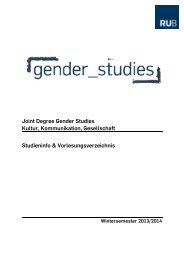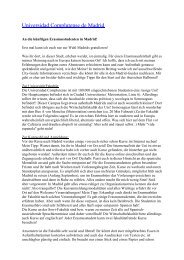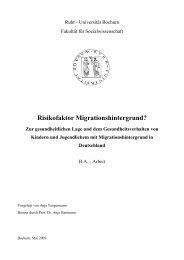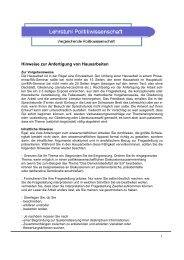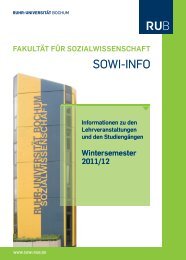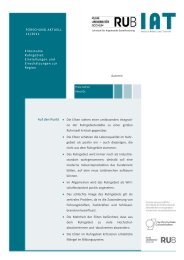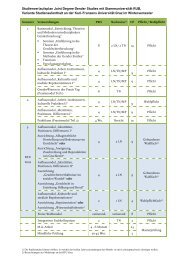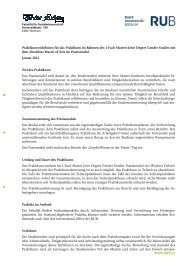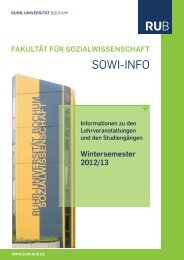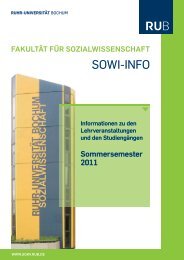View - Fakultät für Sozialwissenschaft der Ruhr-Universität Bochum
View - Fakultät für Sozialwissenschaft der Ruhr-Universität Bochum
View - Fakultät für Sozialwissenschaft der Ruhr-Universität Bochum
Create successful ePaper yourself
Turn your PDF publications into a flip-book with our unique Google optimized e-Paper software.
Wilkesmann/Rascher self-governance and slowness page 9<br />
motivation. Thus individual time-management has to be added to the core dimensions. It is a<br />
prerequisite for intrinsic motivation.<br />
The generation of new knowledge is only one major function of knowledge management. The<br />
following chapter deals with its second function and its structure of self-governance.<br />
2. Storage and exchange of data<br />
The second function of knowledge management is the storage and exchange of data. If every<br />
employee is to use the new knowledge, it will have to be stored and made accessible for<br />
everyone. Different types of preservation and internal channels of communication exist:<br />
report papers, dossiers, personal memory, but also newspapers, bulletin boards and routines.<br />
Here a current channel is analysed, the database.<br />
2.1 The dilemma of data storage<br />
The storage of knowledge is a prisoner’s dilemma. 8 We characterize it as a two person<br />
dilemma. The cooperative strategy illustrated below is to put data in the database. The<br />
defective strategy is not to put data in the database (fig. 1). Another defective strategy is not<br />
to put all the data in, so that the user is not able to un<strong>der</strong>stand the document without additional<br />
information from the author.<br />
8<br />
them to be controlling. In that case, self-determination, self-esteem and the possibility for<br />
expression suffer, and the individuals react by reducing their intrinsic motivation in the<br />
activity controlled. (2) External interventions crowd in intrinsic motivation if the<br />
individuals concerned perceive it as supportive. In that case, self-esteem is fostered, and<br />
individuals feel that they are given more freedom to act, thus enlarging selfdetermination."<br />
(Frey 1997: 18)<br />
Every player has got two strategies: either to cooperate with the other player or not to<br />
cooperate. The first strategy is called cooperation (C), the second defection (D). The<br />
payment at the left shows the benefit for player I, the one at the right for player II. The<br />
letters can be replaced by various numerical values, which only have to be sufficient for<br />
the following or<strong>der</strong>: T > R > P > S and R > (T+S)/2. The dilemma is that the individually<br />
rational strategy is defection. If both players choose this strategy, then the solution will be<br />
P/P, which is pareto-suboptimal. Hence to act individually rational does not lead to a<br />
collectively rational result. In or<strong>der</strong> to produce this, a method has to be found which<br />
makes the cooperative strategy to be individually rational and brings about the result R/R.<br />
This happens when the payment conditions are in the same or<strong>der</strong> as those of the<br />
assurance-game: R > T > P > S.<br />
9




